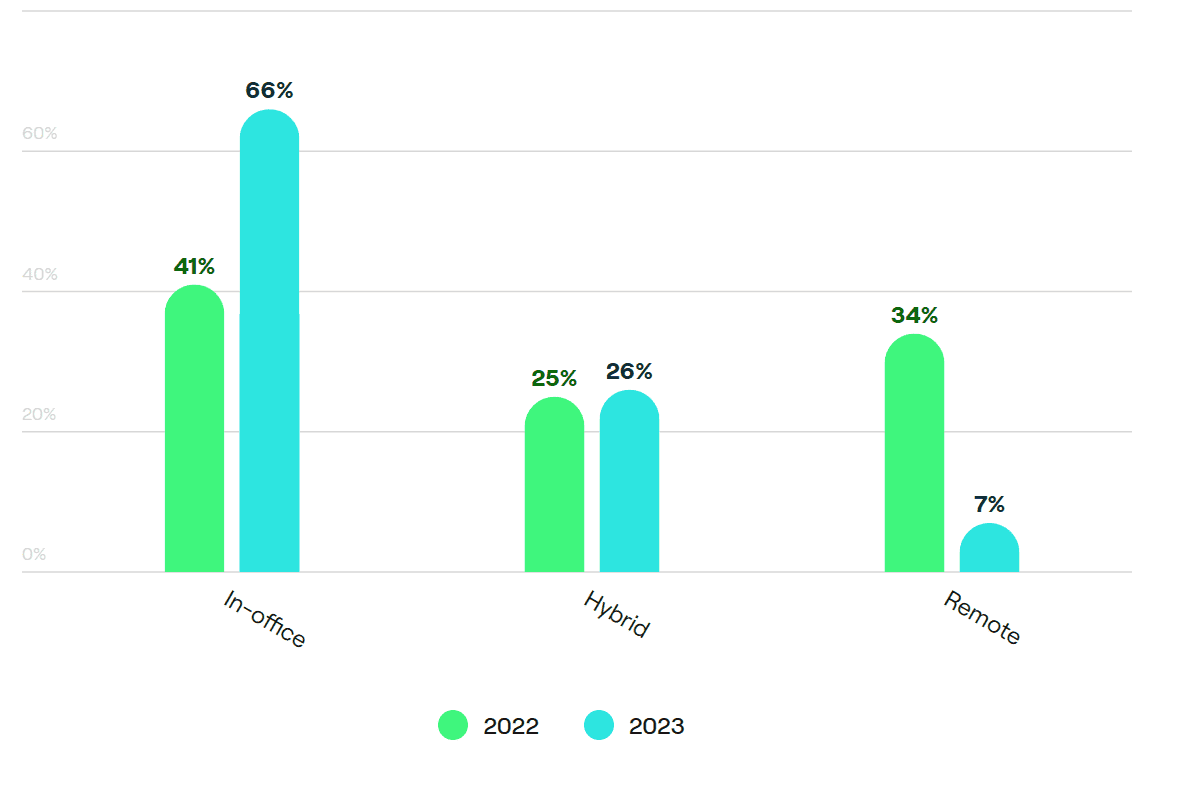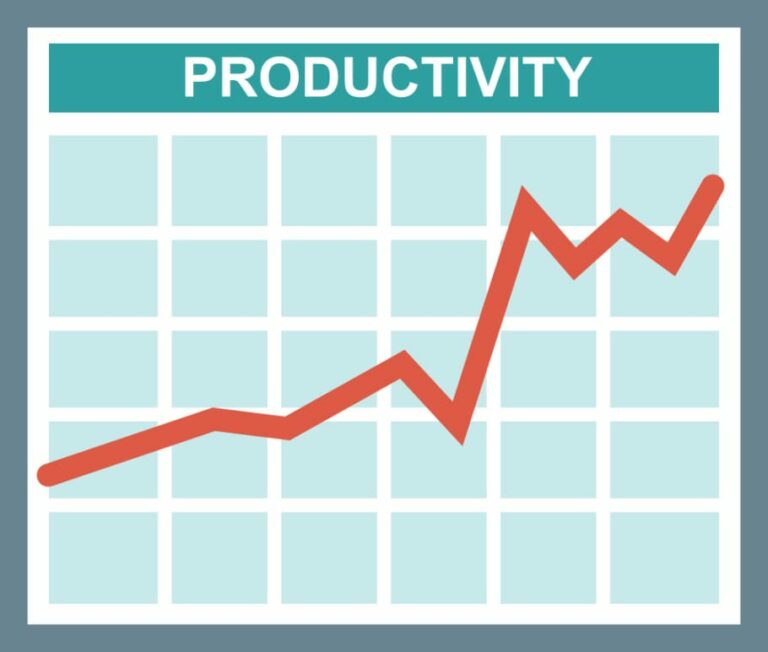The office is trying to creep back into work life, like a sloppy ex showing up at your front door reeking of cheap liquor. When this happens, you’ve only really got two options.
- Tell the office to sling its hook. You’ve got remote work now and you’ve moved on.
- Or take it in, try to give it another chance, only to realize the error of your ways on your third trip to the water cooler. Remote work holds your heart – it always will.
This situation needs to be addressed early, lest it fester. Reject the office while you’re still strong enough to stand on your own two feet. The second you find the office has sunk its desperate hooks back into you is the second your freedom starts to slip away all over again.

All love metaphors aside, to ward off any talk of going back to the office, you need to come prepared. There’s been a rally recently to reintroduce the office lifestyle. You need to come with cold, hard facts. That’s why we’ve put together this work productivity analysis.
A Work Productivity Analysis: The Statistics

Source: Owl Labs.
Let’s get straight to it: 66% of people surveyed by Owl Labs have already returned full-time to the office. The most common excuse to usher people back goes a little like this: “It’s more productive.” This argument is often spouted without any prior research. It’s more based on a hunch and to do with presenteeism – the idea that people looking busy (in an office environment) is better than actual tracked productivity.
It’s not.
Another study by Owl Labs shows that 90% of remote workers believe they are the same or even more productive when working from home compared to working from the office. Only 1% found themselves feeling less productive at home. It’s also worth noting that the same study shows that 55% of workers worked more hours from home than they do at the office.
Gallup, on the other hand, reveals that Hybrid workers are the most productive. It also found that 54% of office workers would leave their current role for one that was more flexible.

Remote workers are only slightly more productive than office workers according to Forbes, but it’s far more effective because people are working longer hours and getting more work done as a result. However, Forbes seems to overlook the worrying rise of digital presenteeism that’s pressuring people to work longer hours in the first place. More on that in a moment.
The Benefits of Working Remotely
A work productivity analysis wouldn’t be complete without listing what benefits people get from working from home. For example, TechReport found that 29% of remote workers experience more happiness than their non-remote counterparts. They also found that 86% of flexible workers are able to save money on transport. Meanwhile, 76% of people seek flexible work because of a desire to improve work-life balance.

According to a separate report by TechReport, even after working an extra 43% hours on average, remote workers face 25% less stress. It’s also worth noting that the average employee can cost a business $18,000 per year in office space. Remote working allows businesses to cut down on office costs. IBM saved $50 million in real estate costs by hiring remote employees.
In the following infographic, you can see the impacts of remote working among those working remotely in the United States in 2019, by benefit.

Source: Statista.
However, it’s important to note that remote working isn’t perfect. There are issues that arise from this specific method of working that need to be addressed. But first, a quick word on a growing method of remote work.
The Rise of Digital Nomadism
Digital nomads are those who work remotely from anywhere in the globe. As they don’t need to go to the office, they are free to roam the planet we call home and live in all sorts of weird and wonderful places. So long as they have a good internet connection, they can get their work done and enjoy the perks of living in a third country. This is perfect if you’re someone without responsibilities at home and working for an async company. There are plenty of asynchronous collaboration tools nowadays that make bridging this gap even easier.
For example, places like Bali in Indonesia or Chiang Mai in Thailand have become hotspots for digital nomads. The remote workers that choose to temporarily (or permanently) base themselves in regions like this benefit from cheaper living costs, higher quality of life, and great weather all-year round (if you don’t mind the occasional monsoon).

In fact, digital nomadism is now being encouraged by many countries as it increases tourism and introduces more money into the local economy. There are even some countries with tax-free digital nomad visas, meaning you can go there for longer periods of time and not owe any taxes on income earned from external sources.
While this lifestyle isn’t for everyone, it’s certainly an opportunity that becomes available to you when remote work is on the table. It would be impossible to live this lifestyle if employers needed you to be in the office.
Digital nomadism doesn’t necessarily counter the feelings of loneliness and the other negative side effects of remote work. The difference is you can wake up, go for a swim, sip a fresh mango juice on the beach while you ommmm your way into the work mindset.

A lot of digital nomad hubs also feature co-working spaces where you can meet like-minded individuals, not to mention there are plenty of expat groups. Depending on where you choose to work, you can often find group hobbies for much more affordable prices, too.
The Ugly Side of Remote Work
While you might be able to work from your bed in your PJs, remote work isn’t all it’s cracked up to be for some. There are a number of downsides to working remotely, many of which are digital leftovers from the office days.
Presenteeism vs Productivity
Unfortunately, even while remote working, presenteeism is still a threat. The difference between regular ol’ presenteeism and the digital kind is that workers aren’t switching off at all. Replying to emails out of work hours, feeling pressure to always be ready to respond no matter what time of day, even on weekends, are just some of the ways that presenteeism still affects remote workers.
Loneliness

A lot of remote workers report feeling more lonely when they don’t have face-to-face interactions with colleagues. Research from Zippia shows that 50% of remote workers feel lonely while working from home at least once per week. In fact, 19% of those surveyed felt that “isolation” was their number one problem.
This is one of the reasons why hybrid working might be a better choice. You get the best of both worlds: you have the flexibility of working from home most of the time and all the benefits that come with that, while you also get the option to go into the office every now and then and interact with your teammates on a more personal level. After all, it’s often the out-of-work connections and daily chats that can lift up your day. When you’re only seeing your work friends in official meetings, you’re less likely to have that same bond.
Poorer Work-Life Balance
Related to digital presenteeism, there are negative reports of work-life balance for remote workers (as well as tons of positive ones). For example, 67% of remote workers feel pressure to be available all hours of the day, making it harder for them to switch off after work. When the office is in the home, it can be more difficult to separate the two. You don’t want work life seeping into home life.

40% of remote workers cite exactly this as their biggest issue with remote work: unplugging after hours. Having said that, the same report states that 86% of people feel that working remotely reduces their stress levels.
The Remote Work Tool You NEED
In the world of remote work, you still have to stay in touch with your colleagues. You’re probably already familiar with Zoom, MS Teams, or Google Meet: the big three online meeting platforms. But what you’re probably not familiar with is tl;dv, a third party app that can record, transcribe, and timestamp your meetings for internal organization as well as a whole host of specific use cases.
For example, if you’re a sales rep, you can use tl;dv to record your sales calls. Its intuitive AI will provide summaries and notes, while you can use it to search your entire meetings library by keyword to find common themes, pain points, or objections. It doesn’t stop there, though. tl;dv gives you the power to cut these scenes from separate videos and knit them together into a highlight reel that can be shared so your colleagues can understand the key objections or pain points from the voice of the customer(s). This entire process can be done in mere moments!
The same process can be applied to UX researchers who need to present their findings to the big bosses, recruitment teams that are making an important hiring decision, and even customer success teams that are trying to improve their customer satisfaction.
The ability to record, transcribe, and translate any meeting on Google Meet, Zoom, or MS Teams is invaluable. But with tl;dv, you can get started from the comfort of your own home without spending a single cent!
Download tl;dv for FREE today and give it a whirl. For business-level features like CRM integrations and creating highlight reels, you can subscribe to the Pro Plan for just $20 per month.
A Work Productivity Analysis: The Verdict
Remote working isn’t without its flaws, but it should be fairly obvious by now that it comes with many benefits. From more flexibility (in where and often when you work) to increased savings, remote work is not something that should fade out. It’s something that should be fought for!

Productivity is almost always higher – even if only slightly so – when working from home. What we need to cultivate more of is the positive side of remote work. That means cutting out the presenteeism and switching off at a dedicated time every day. Turn off your notifications and leave your work life until your next work day. It’s about discipline, but should also be encouraged from the top down.
Working from home often carries a stigma with it too. People leave their home less, use screens more, and it can lead to feeling socially isolated. But with remote work comes the opportunity to see the world on work days as well as holidays. Digital nomadism opens the door for fulfilling desires to see and explore new places without having to quit your job and having the pressure and risk of no steady income. Of course, not all remote jobs allow you to travel globally, or you may have other responsibilities like children or partners who work in-office, but it’s certainly an exciting option for many. And even if you don’t travel, you’ve got extra time in your day that you would previously have spent commuting.
All in all, if employers and employees alike encourage flexibility and purposely avoid fostering a sense of digital presenteeism, remote work can be fantastic. To counter feelings of loneliness among remote workers, employees could opt for a hybrid system, or incentivize regular meet-ups outside of work hours. Or both.
So don’t let remote work fade into memory. Hopefully this work productivity analysis has given you the statistics and tools you need to keep it alive! Don’t forget to give tl;dv a whirl too. It’s free, so you’ve got nothing to lose!







